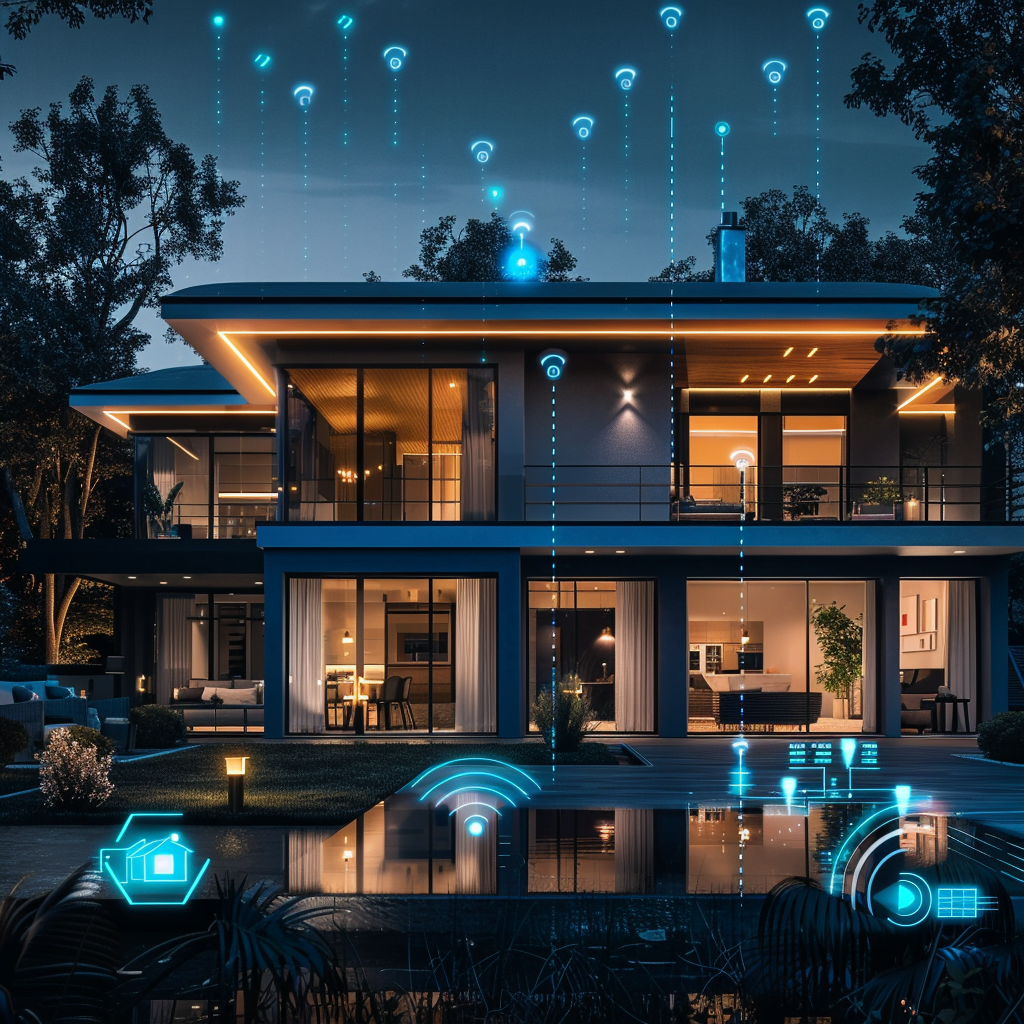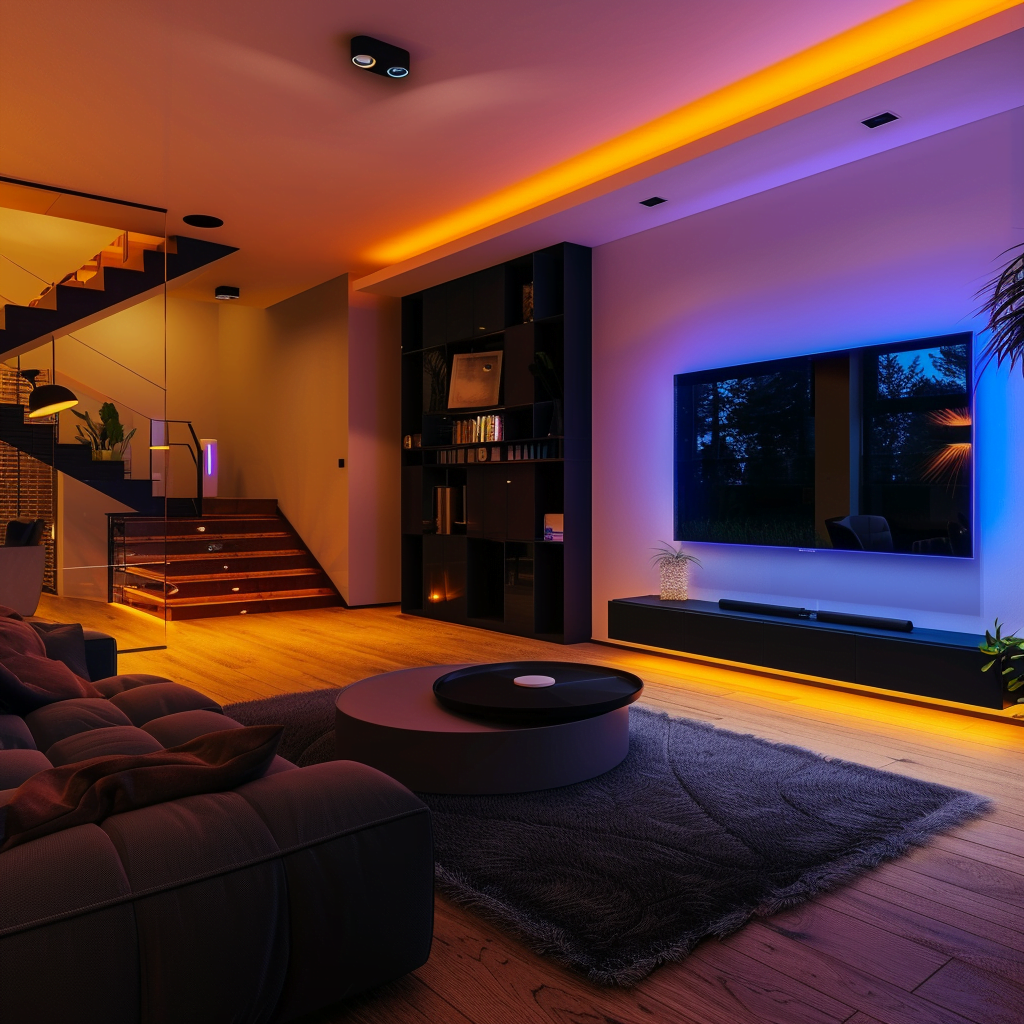In today’s fast-paced world, managing a home can be complex and time-consuming. However, with the advent of smart home automation, homeowners can now enjoy a more streamlined, efficient, and comfortable lifestyle. Smart home technology offers the ability to control various home systems and appliances remotely, ensuring that your living environment adapts to your needs with unprecedented precision. Here’s how you can transform your house with smart home automation, enhancing both its functionality and your quality of life.
Begin with the Essentials: Smart Lighting and Thermostats
One of the easiest entry points into smart home automation is through smart lighting and thermostat systems. Smart lights can be programmed to turn on and off at specific times, adjust brightness based on the time of day, and even change colors to create different moods. They can be controlled remotely via smartphone apps, making it easy to manage lighting when you’re away from home.

Smart thermostats learn your heating and cooling preferences and adjust the temperature automatically to optimize comfort and energy efficiency. They can also generate reports on your energy usage, helping you to make informed decisions about your consumption patterns.
Secure Your Home with Smart Locks and Surveillance Systems
Security is a major concern for any homeowner. Smart home automation enhances security with features like smart locks and advanced surveillance systems. Smart locks allow you to lock and unlock doors remotely, grant temporary access to visitors, and receive alerts when someone enters your home. Surveillance systems can be monitored from your smartphone, providing real-time video feeds and notifications if unusual activity is detected.
Command with Ease: Voice Assistants and Home Hubs
Voice assistants like Amazon Alexa, Google Assistant, and Apple Siri can serve as the cornerstone of your smart home automation system. These devices allow you to control smart home devices using voice commands. You can ask your voice assistant to adjust the thermostat, turn off the lights, or even start your coffee maker, all without lifting a finger.
Integrating these devices with a central home hub can further streamline your smart home experience. The hub connects different smart devices, enabling them to work together seamlessly. For example, you can create a “goodnight” routine that locks the doors, turns off the lights, and adjusts the thermostat with a single voice command.
Increase Energy Efficiency with Smart Appliances and Sensors
Smart home automation isn’t just about convenience; it’s also about efficiency. Smart appliances like refrigerators, washers, and dryers can be optimized to run at times when energy costs are lower. Moreover, water leak sensors and smoke detectors can provide real-time alerts to prevent costly damages and ensure your home’s safety.
Upgrade Your Entertainment with Smart Devices
With smart home automation, transform your living environment into an entertainment hub. Smart TVs and speakers can be connected to the internet, allowing you to stream content seamlessly.

Multi-room audio systems let you play music throughout the house, and with smart home integration, you can control all these devices through a single app or voice command.
Optimize Comfort with Automated Curtains and Climate Control
Automated curtains and blinds can adjust themselves based on the time of day or light sensors, contributing to both your home’s comfort and energy efficiency. Combined with smart thermostats that adjust the climate based on your presence or schedule, your home becomes a haven of tailored comfort.
Monitor and Manage with Smart Sensors
Smart sensors play a crucial role in home automation. They can detect movement, monitor environmental conditions like humidity and temperature, and even track energy usage. These sensors provide valuable data that can help you better understand and optimize your living environment.
Simplify Daily Chores with Smart Home Robots
From robotic vacuum cleaners to lawn mowers, smart home robots can take over mundane chores, freeing up your time for more important activities.

These devices can be scheduled and controlled remotely, ensuring your home stays clean and tidy without constant manual intervention.
Enhance Accessibility for Everyone
Smart home automation can be particularly beneficial for the elderly or those with mobility issues. Voice-controlled systems allow easy operation of home features, while automated doors and lighting make moving around the house safer and more comfortable.
Plan for Scalability and Integration
As you plan your smart home setup, consider choosing platforms and devices that are compatible with each other and can be easily scaled or integrated with future technologies. This ensures your smart home system remains versatile and adaptable as new innovations emerge.
Frequently Asked Questions About How to Transform Your House with Smart Home Automation
What is smart home automation?
Smart home automation involves the use of interconnected devices that manage various home functions such as lighting, climate control, security systems, and entertainment through automatic or remote control means. This technology allows homeowners to control these systems from anywhere using a smartphone, tablet, or voice commands.
How can smart home automation enhance home security?
Smart home automation can significantly enhance home security through automated door locks, surveillance cameras, and motion detectors. These systems can alert homeowners to any suspicious activity in real-time and can be monitored and controlled remotely, increasing the safety of the home even when you are away.
Are smart home systems expensive?
The cost of smart home systems varies widely based on the complexity and scale of the setup. Basic systems, such as smart lighting and thermostats, are relatively affordable and offer a good starting point. More comprehensive systems that include advanced security and entertainment features can be more costly but also provide greater functionality and convenience.
Can I install smart home devices myself?
Many smart home devices are designed for easy DIY installation, and manufacturers often provide detailed guides to assist homeowners. However, for complex systems or whole-house integration, professional installation might be recommended to ensure optimal performance and compatibility.
How do smart home systems save energy?
Smart home systems save energy by allowing homeowners to automate and remotely control their home’s heating, cooling, and lighting based on usage patterns and preferences. Smart thermostats and lighting systems can adjust automatically to reduce waste, contributing to lower utility bills and a smaller environmental footprint.
What should I consider when choosing smart home devices?
When selecting smart home devices, consider compatibility with existing systems and other smart devices, ease of use, the level of technical support provided, and the security features available. It’s also important to think about the scalability of the system to accommodate future technology upgrades.
Can smart home automation increase my property’s value?
Yes, installing smart home automation systems can increase a property’s value by making it more attractive to potential buyers who value modern conveniences and energy efficiency. These systems can also be a selling point that differentiates a home from others on the market.
Do smart home devices require a lot of maintenance?
Smart home devices typically require minimal maintenance. Regular software updates and occasional hardware checks can ensure they continue to function effectively. Many systems also self-monitor and will notify you if any issues arise or maintenance is needed.
Will smart home automation still function during a power outage?
Some smart home systems have battery backups to maintain functionality during power outages, especially security components. However, the extent to which the system will operate can vary based on the specific devices and their power requirements.
Can I integrate old appliances into a smart home system?
Old appliances can often be integrated into a smart home system using smart plugs and switches that enable remote control of power supply. While these appliances won’t have all the capabilities of purpose-built smart devices, this can be a cost-effective way to incorporate them into your smart home setup.
Conclusion
Transforming your house with smart home automation not only makes your daily routines more convenient but also enhances your home’s security, energy efficiency, and entertainment options. As you gradually integrate more smart devices, you’ll discover a new level of comfort and control over your living environment, truly living smarter. This investment not only improves your current lifestyle but also adds significant value to your home, proving advantageous in the long term.

